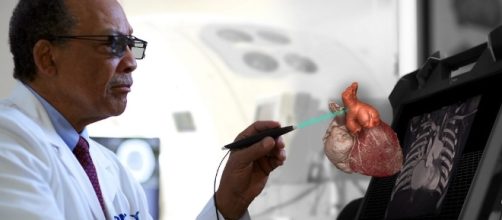One of the inconvenient truths of Public Policy is that advances in technology will have more of an effect on lowering the cost of healthcare than will the machinations of politicians and bureaucrats (the latter often having the opposite effect.) After all, how much do we spent on polio besides vaccinations these days? In any case, the latest proof of the maxim was described in a recent article Longitudes about the coming 3D printing revolution in medicine.
A lot of people have already read about the prospect of 3D printed organs, grown from a patient’s own stem cells and thus an exact genetic match, making such universally available and eliminating the need for rejection drugs.
3D printed hip and knee replacements are already starting to revolutionize standard procedures that seniors have to go through. 3D printed artificial legs and arms are improving the lives of people who have had limbs amputated.
3D Printing also has the potential to cut the cost of drug development, now at $50 billion a year. Print on demand medical supplies can also reduce the volume of medical waste, which is also a cost driver in health care.
The upshot is that the technology will enable health care providers to treat more people with more conditions cheaper and more efficiently. The fact needs to be part of the debate on Health Care Reform, especially the one to improve health care reform.
How does a society encourage innovation that brings down the cost of healthcare and brings its benefits to more people? The answer would seem to be two-fold.
First, a health care system that encourages innovation has to be market-based. Markets tend to spur innovation and to direct it to where it will do the best, Command economic structures. I.E. government run healthcare, are not so useful.
Second, and paradoxically, the government has a role in financing a lot of cutting edge medical research. That fact is one reason that the Trump administration’s proposal to slash NIH funding is so short-sighted and, in the long run, expensive. The government should also remove regulatory roadblocks to cutting cures developed and to patients and doctors.
In short, the solutions to health care problems reside not in political committee rooms, but in the lab.

